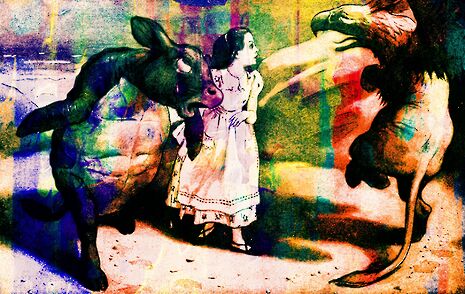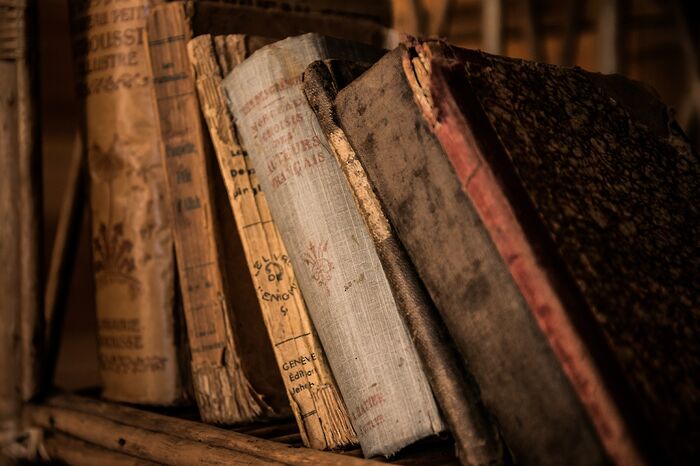Illustration and imagination
Whether they enhance the reader’s experience, or impose a needless limit on their imagination, it’s undeniable that illustrations are important to many different books. Katy Darwent explores their pros and cons.

If the old cliché that a picture paints a thousand words is true, then why the need for any verbal explanation of whatever is actually being shown to us? Illustrations and aesthetic tweaks are an often under-appreciated part of writing, generally reduced to the cover. But why does the focus need to be on the images, with words as superfluous garnish, for the book to be taken seriously? After all, who doesn’t love an excuse to look at the pretty pictures?
One answer could be that in any good book, the illustrations, rather than the words, are superfluous; when Charlotte Bronte has just spent two pages describing the physical attributes, style and mannerisms of the guests at Rochester’s, do we really need a sketch to give us details we already know – or worse, depict the same information we’ve heard in a way that’s slightly different from how we imagined it ourselves. Reading is the deeply personal act of building an internal world of senses, the easiest of which to trick ourselves into believing is sight; undermine the image and the whole imaginary world seems flat, and made of paper.
“The vagueness gives us all the ability to be Alice, in a sense, as we assume her role and become the protagonist and heroine wandering through Wonderland”
Or is it better to have our assumptions challenged, and our eyes opened to the possibility of the text beyond what we already imagined ourselves? Jane Austen was famously extremely vague about what kind of figure, beyond a dashing one, Mr. Darcy actually cut, with readers’ expectations venturing in directions wildly different enough to make each version of the protagonist their own; most illustrated versions of classic novels resort to similar vagueness in artistic form. Rapid pencil sketches, soft, stylised lines, with slightly bleeding colours, and illustrations where the focus of detail seems to lay more heavily on, say, a dress than on the wearer’s face are all useful ways of keeping the magic alive.
Silhouettes and abstract art can often convey, rather than the details given in the text, a sense of something that many find much harder to gain from a dense novel: the emotions. Characters’ interactions are caught mid-flow; their environment laid out often more precisely than in the writing, where it may be ignored almost entirely; their sketched profiles and faces tell more of movement and emotion than exact proportion or physiognomy – in short, illustrations often, even when accompanying the most detailed of novels, give the reader the information they are missing from the novel’s words themselves.
Alice in Wonderland is the prime example of illustrations really making the book what it is, as a key part of the work that’s impossible to separate in our minds from the whole. Intriguingly enough for someone who had a very specific picture of who “Alice” was, and what she looked like, Carroll not once mentions her physical appearance. The vagueness gives us all the ability to be Alice, in a sense, as we assume her role and become the protagonist and heroine wandering through Wonderland – but Tenniel’s illustrations give us an Alice who, whilst separate to ourselves, we can really root for. Her physiognomy marks her out as the perfect heroine: her high, intelligent forehead; a clever, interesting face with a determined set of the mouth and expressive eyes; her long, loose hair, lending her the innocence and softness of a sweet young girl, albeit one who dresses in pinafores over her bustle skirts, ready for action.
Alice’s look is so distinctive, not least the blue dress and striped socks (although there are many variations of her outfits shown throughout the book, including her in yellow), that it exists beyond the page in myriad mutations which, however far removed from the characters herself, are still easily recognisable as “Alice”. Fashion shoots based on the premise (with Karl Lagerfeld as the Mad Hatter!); fancy dress costumes of which it’s hard to imagine a Victorian girl wearing, or even an adult who isn’t either a) an exhibitionist or b) around someone they know very… well; numerous manga spinoffs from and mutations on the Alice in Wonderland theme (including one where Alice is a murderer, or a boy who transforms into a girl called Alice when he enters Wonderland, or – my personal favourite – “Kuro Bara Alice”, in which a 28-year-old teacher’s soul is saved by vampires and put in the body of a 16-year-old long-dead Polish noblewoman, then seemingly faces a dilemma over which one of the supernaturally hot vampires she should breed with) – they are all linked by the “Alice” aesthetic, however tenuously they stick to it.
Tenniel’s illustrations, those iconic images, prove that illustrations can give a story real weight – instead of clever nonsense rhymes and riddles, we have a heroine whose bewilderment and fascination at those same absurdities we can mirror and sympathise with. And, like any well-drawn character (pun intended), she lives, through her image, beyond the world she was originally conceived in. Carroll’s words make her story real, but Tenniel’s drawings make her so
 News / Eight Cambridge researchers awarded €17m in ERC research grants27 December 2025
News / Eight Cambridge researchers awarded €17m in ERC research grants27 December 2025 News / Downing investigates ‘mysterious’ underground burial vault 29 December 2025
News / Downing investigates ‘mysterious’ underground burial vault 29 December 2025 Lifestyle / Ask Auntie Alice29 December 2025
Lifestyle / Ask Auntie Alice29 December 2025 Sport / Hard work, heartbreak and hope: international gymnast Maddie Marshall’s journey 29 December 2025
Sport / Hard work, heartbreak and hope: international gymnast Maddie Marshall’s journey 29 December 2025 Interviews / Meet Juan Michel, Cambridge’s multilingual musician29 December 2025
Interviews / Meet Juan Michel, Cambridge’s multilingual musician29 December 2025









